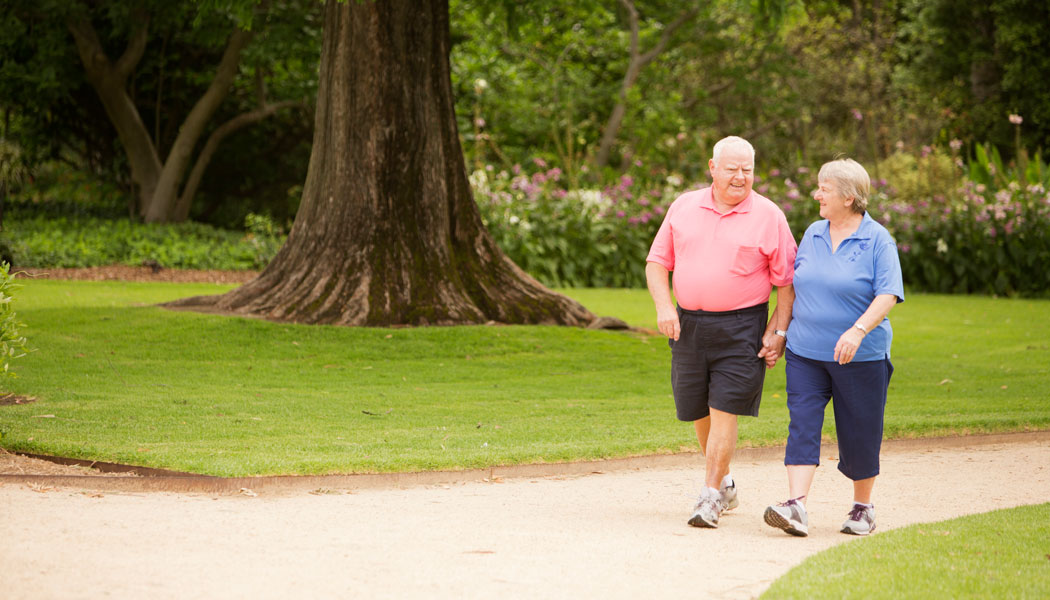People are spending more time indoors. Television, computers, eating, playing table games, going to the movies, going to a broadway show, sight seeing, socializing with friends; all require more time sitting than you care to admit. The lack of movement is a major issue for the current generation of seniors.
Walking may not seem as beneficial as other cardiovascular exercises like, running, biking or swimming, but there are a lot of health benefits to walking regularly. Especially for seniors: it’s an effective way to reduce the risk for chronic conditions and improve your overall health. Some of the benefits of walking for seniors include:
- Improves heart health. For seniors, walking offers numerous heart health benefits. Getting your heart rate up daily leads to a reduction in the risk for high blood pressure and high cholesterol, and even coronary heart disease.
- Lowers blood sugar. After eating, taking a 15-minute walk has been shown to reduce the after-eating spike in blood sugar some seniors can experience. Your body is using blood sugar more effectively to strengthen muscles, and insulin works better, too.
- Reduces pain. Studies have shown that walking helps reduce some pain due to chronic conditions like arthritis. Some seniors experience lower back pain, and walking even just three times a week for around 20 minutes can help strengthen abdominal and back muscles to decrease chronic back pain.
- Low participation cost. After you’ve invested in a good, sturdy pair of shoes, you can walk basically anywhere- for free! When the weather permits, head to the park for a stroll on the path or simply walk around your neighborhood. If it’s too cold or rainy to go outside, head to a shopping mall instead.
- Promotes social engagement. Walking offers an easy way for seniors to meet up with others, whether you join a walking group with friends or simply engage with neighbors while out on your daily walk. You can meet new people and enjoy your environment each day.
- Boosts mental health. A daily walk can help you feel more positive about life. The endorphins released during physical activity create a sense of well-being, reduce anxiety and boost your mood.
How to Add Walking to a Daily Routine
The most basic goal in a rehabilitation program is to get people on their feet and walking again. After hip replacement surgery, for example, patients are asked to get out of bed and start walking to help promote blood circulation and prevent muscles and joints from seizing. It’s a low impact way for seniors of all ages to improve cardiovascular fitness and strengthen muscles and bones.
Incorporate walking into your daily routine and start reaping the benefits! Get a pair of supportive, sturdy sneakers, lace them up, and then choose a familiar route that is free of obstacles. Make sure the surface is smooth and soft to put less strain on your joints. Start off slowly with a 10-minute walk and then gradually increase the time and your pace. Dress appropriately for the weather, and don’t forget to stay hydrated! If you feel any pain during your walk, stop and take a break, and consult your physician if any pain continues.


